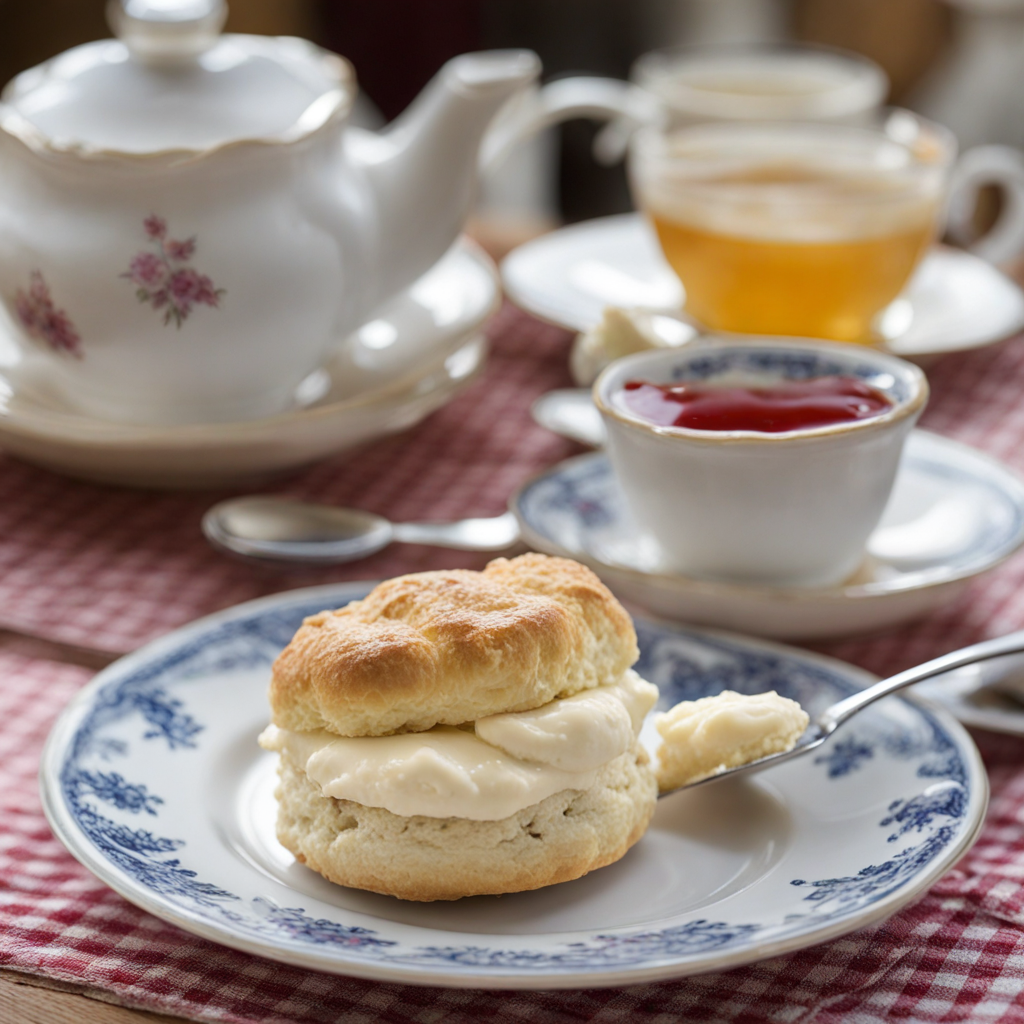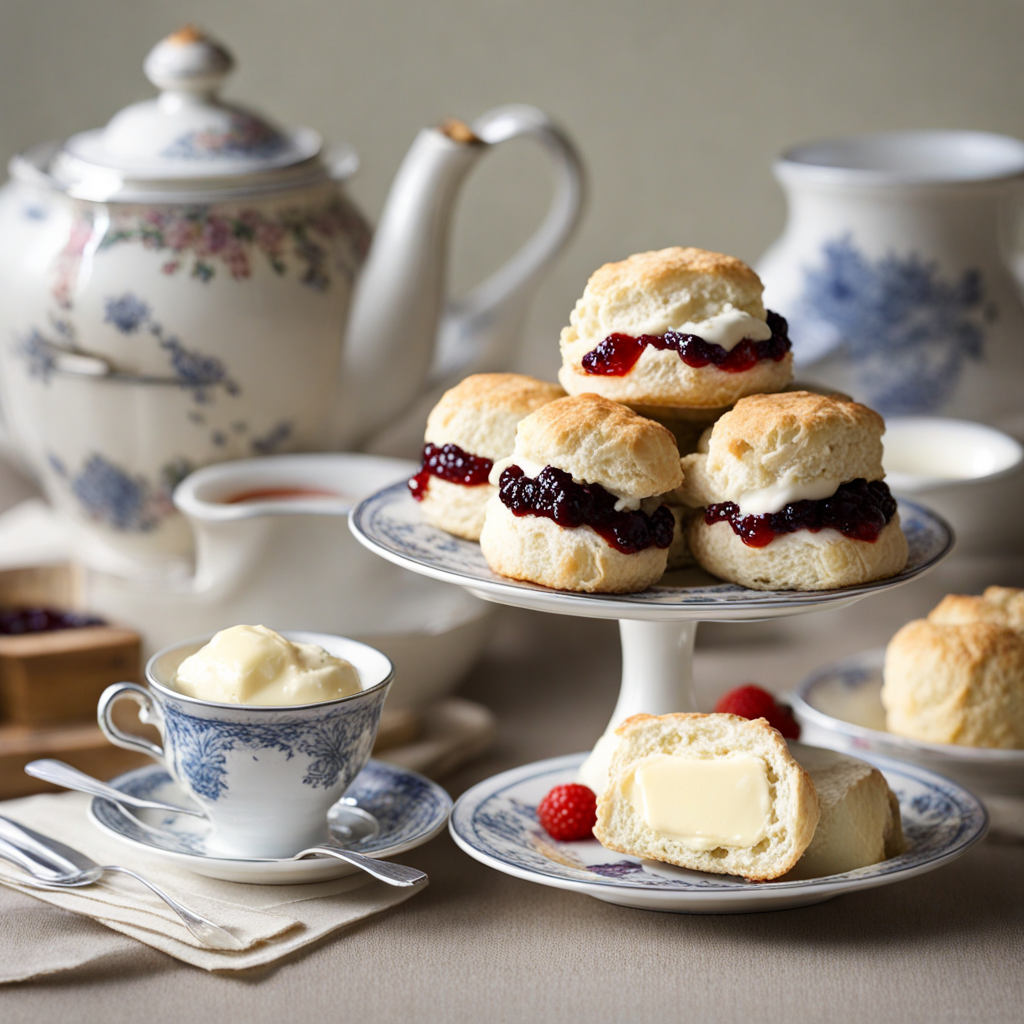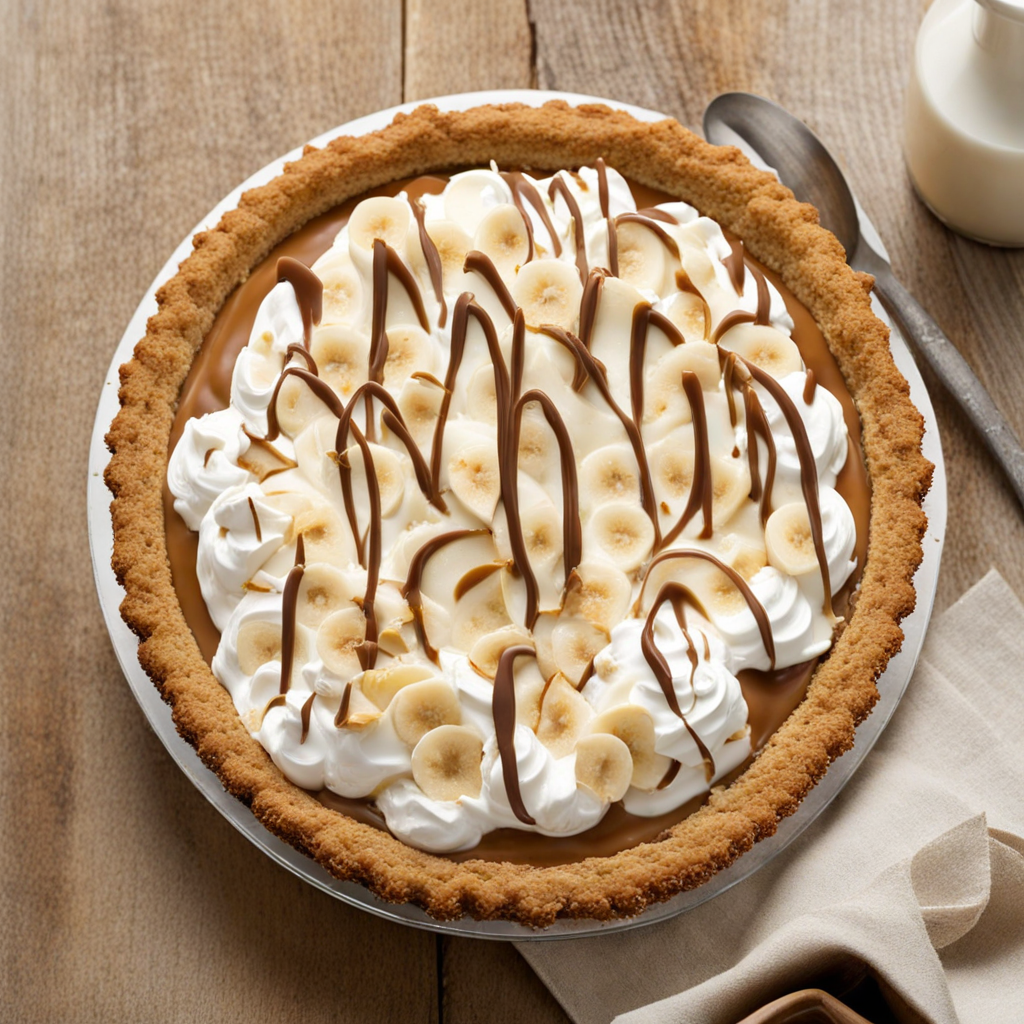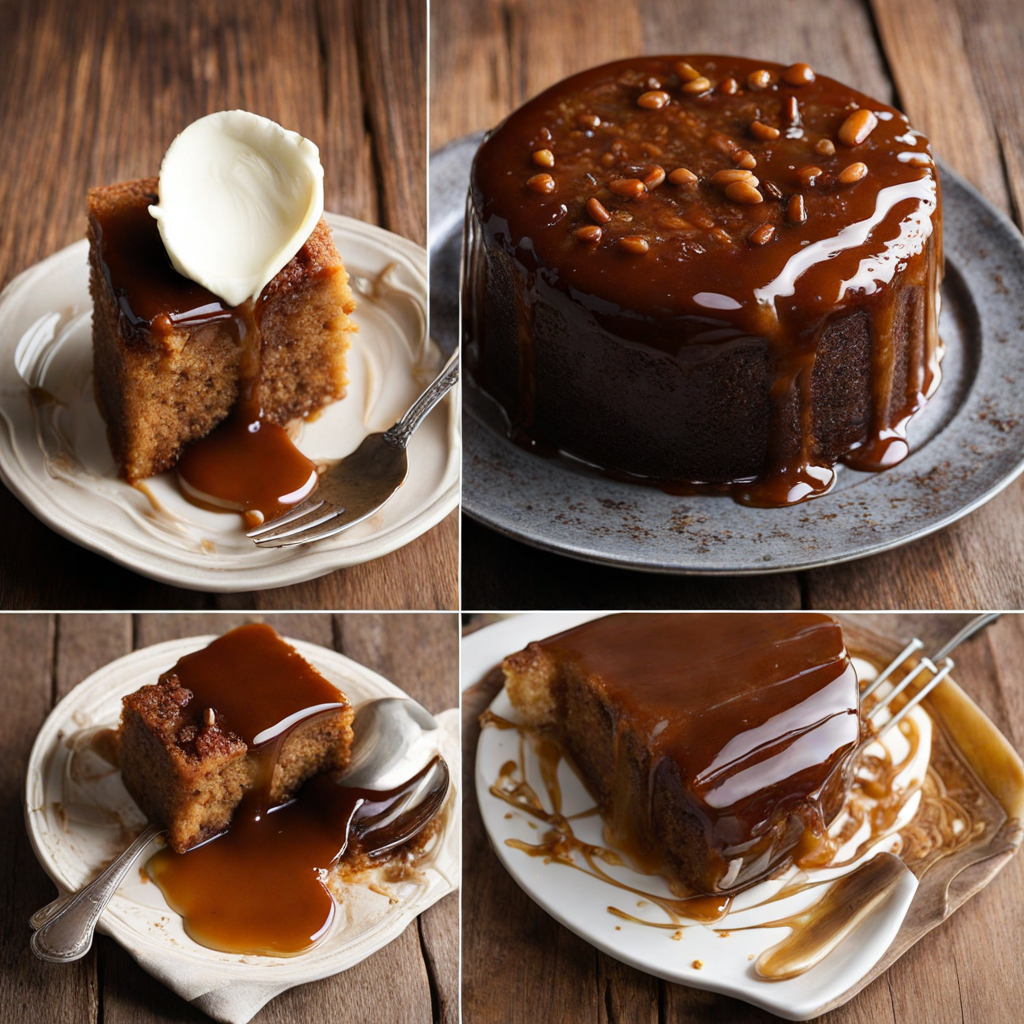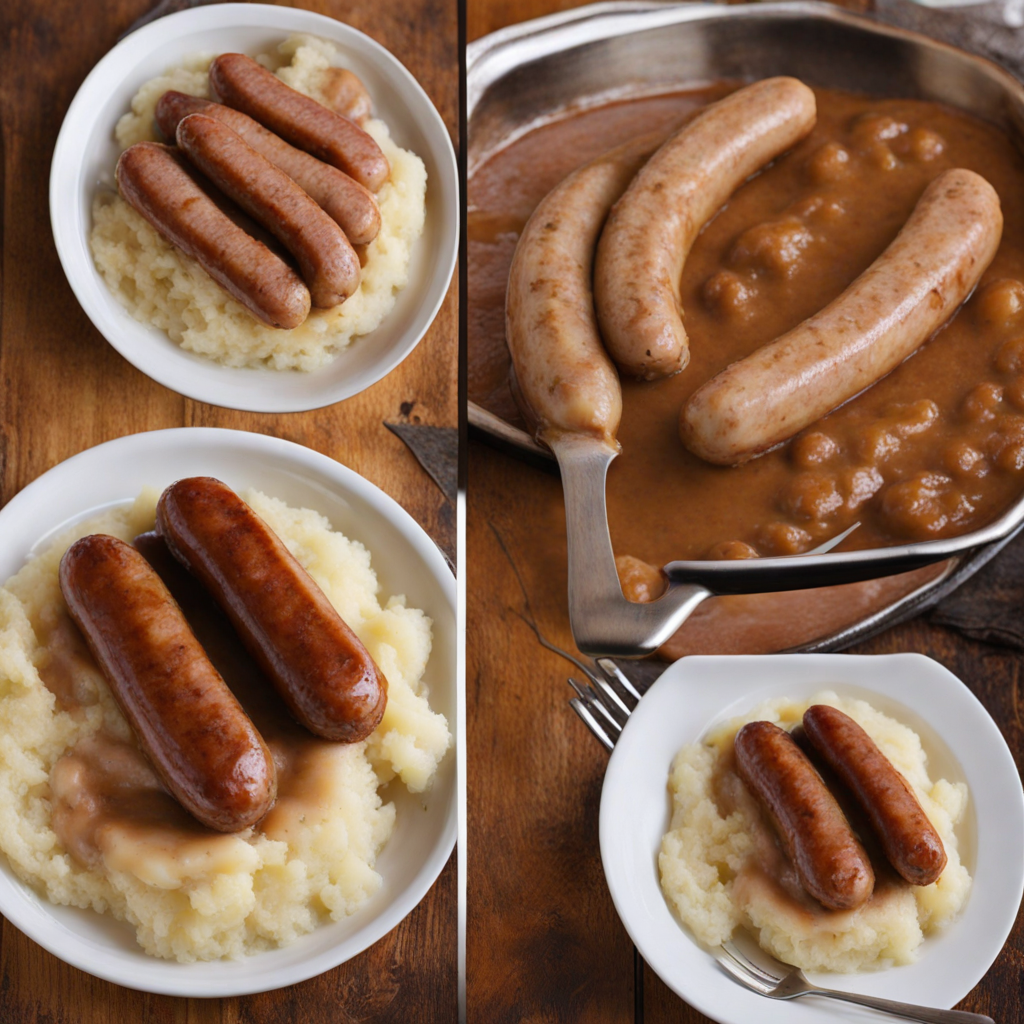Cornish Cream Tea
Cornish Cream Tea is a delightful culinary experience that hails from the picturesque county of Cornwall in the United Kingdom. This traditional treat is not merely a dish but rather an indulgence that combines the exquisite flavors of freshly baked scones, clotted cream, and strawberry jam. The scones, often served warm, are light and fluffy with a slightly crisp exterior, providing the perfect base for the rich toppings. The contrast between the soft scone and the creamy clotted cream creates a luxurious texture that is simply irresistible. At the heart of the Cornish Cream Tea is clotted cream, a rich and decadent dairy product made by slowly heating full-cream milk and then allowing it to cool. The result is a thick, buttery cream with a slightly sweet flavor that melts beautifully into the warm scone. Accompanying this is the sweet and tangy strawberry jam, which adds a burst of fruity flavor that complements the cream and balances the richness of the scone. The combination of these elements makes each bite a harmonious blend of textures and tastes that is both comforting and satisfying. Cornish Cream Tea is not just about the food; it is also a social ritual often enjoyed during afternoon tea, typically served with a pot of freshly brewed tea. This delightful experience is best savored in scenic settings, perhaps overlooking the stunning Cornish coastline. The charm of Cornish Cream Tea lies in its simplicity and the quality of its ingredients, making it a must-try for anyone looking to explore the rich culinary heritage of the United Kingdom. Whether enjoyed at a quaint tearoom or made at home, it promises to transport your taste buds to the idyllic countryside of Cornwall.
How It Became This Dish
The History of Cornish Cream Tea Cornish Cream Tea is not just a delightful culinary experience; it embodies the rich cultural heritage of Cornwall, a region steeped in history, tradition, and natural beauty. The combination of freshly baked scones, clotted cream, and strawberry jam served with a pot of tea has become a symbol of Cornish identity, drawing locals and tourists alike to experience this quintessentially British treat. #### Origins The origins of Cornish Cream Tea can be traced back to the late 19th century, although the elements that comprise it have much older roots. Tea drinking became popular in Britain during the 17th century, but it was not until the Victorian era that it evolved into an afternoon ritual accompanied by cakes and pastries. The tradition of serving scones emerged around this time, influenced by the clotted cream that was already a staple in the West Country, thanks to its dairy farming heritage. Clotted cream, made by slowly heating full-fat cow's milk and allowing it to cool, forms a thick layer of cream on the surface. This method of cream production dates back centuries, with references to it appearing in various forms throughout the UK, especially in Devon and Cornwall. In fact, the rivalry between Devon and Cornwall over the proper way to serve cream tea is a long-standing and passionate debate among locals. While Cornish tradition dictates that the scone should be split open and topped with clotted cream first, followed by jam, Devonshire tradition advocates for the reverse. #### Cultural Significance Cornish Cream Tea is more than just a treat; it represents a significant aspect of Cornish culture and hospitality. Tea rooms and cafés across Cornwall offer this delicacy, making it a popular choice for tourists exploring the picturesque landscapes, quaint villages, and stunning coastlines of the region. The ritual of enjoying a cream tea is often complemented by the warm, welcoming atmosphere of these establishments, reflecting the friendly nature of Cornish people. The essence of Cornish identity is deeply intertwined with its food culture, and cream tea occupies a cherished place in the hearts of locals. It serves as a means of socializing and celebrating occasions, from family gatherings to special events. The act of sharing a cream tea can signify a sense of community and tradition, reinforcing the bonds among family and friends. #### Development Over Time As the 20th century unfolded, Cornish Cream Tea began to gain recognition beyond the borders of Cornwall. The advent of tourism in the region, particularly after World War II, led to an increased interest in local culinary traditions. Visitors flocked to Cornwall to enjoy its stunning scenery and rich heritage, and Cornish Cream Tea became a must-try experience. The increase in tourism also prompted the establishment of more tea rooms and cafés, each vying to present their unique take on this classic dish. The late 20th century saw the rise of food movements emphasizing local and traditional produce. This trend aligned perfectly with the ethos of Cornish Cream Tea, which relies on high-quality, locally sourced ingredients. The clotted cream is often produced by small dairies in Cornwall, known for their artisanal methods. The use of local strawberries for jam further enhances the authenticity and flavor of the experience. In 2010, the Cornish Clotted Cream was awarded Protected Designation of Origin (PDO) status by the European Union, further solidifying its significance and authenticity associated with the region. In recent years, the popularity of Cornish Cream Tea has surged not only in Cornwall but across the wider UK and even internationally. With the advent of social media, images of beautifully arranged cream teas have created a buzz, making it an Instagram-worthy experience for travelers. Various adaptations have emerged, including gluten-free scones and vegan versions, catering to changing dietary preferences while maintaining the core essence of the dish. #### The Ritual The traditional ritual of enjoying a Cornish Cream Tea typically takes place in the afternoon, although it can be enjoyed at any time of the day. The experience usually involves a pot of freshly brewed tea, which can range from traditional blends like Earl Grey to locally sourced herbal infusions. The scones, often served warm, are typically light and fluffy, and their texture is crucial to the overall experience. The debate over the correct method of serving cream tea—whether to spread the jam or cream first—continues to evoke strong opinions. While some Cornish locals passionately defend their method, many visitors enjoy both styles, adding to the charm and complexity of the tradition. Regardless of the order of toppings, the combination of the rich, velvety clotted cream with the sweet, tangy jam atop the warm scone creates a heavenly experience that tantalizes the taste buds. #### Conclusion Cornish Cream Tea is more than just a culinary delight; it represents the history, culture, and identity of Cornwall. From its humble beginnings in the late 19th century to its modern-day status as a symbol of Cornish hospitality, this dish embodies the spirit of the region. The ongoing debates about the proper way to serve cream tea only enhance its appeal, fostering a sense of community among those who cherish this tradition. As Cornwall continues to thrive as a tourist destination, Cornish Cream Tea remains a must-try experience, inviting everyone to partake in its rich flavors and warm hospitality. Whether enjoyed in a quaint tea room overlooking the rugged coastline or in the comfort of home, Cornish Cream Tea will undoubtedly continue to hold a special place in the hearts of many, celebrating the heritage of Cornwall for generations to come.
You may like
Discover local flavors from United Kingdom


